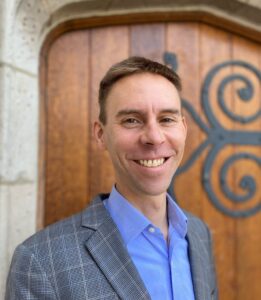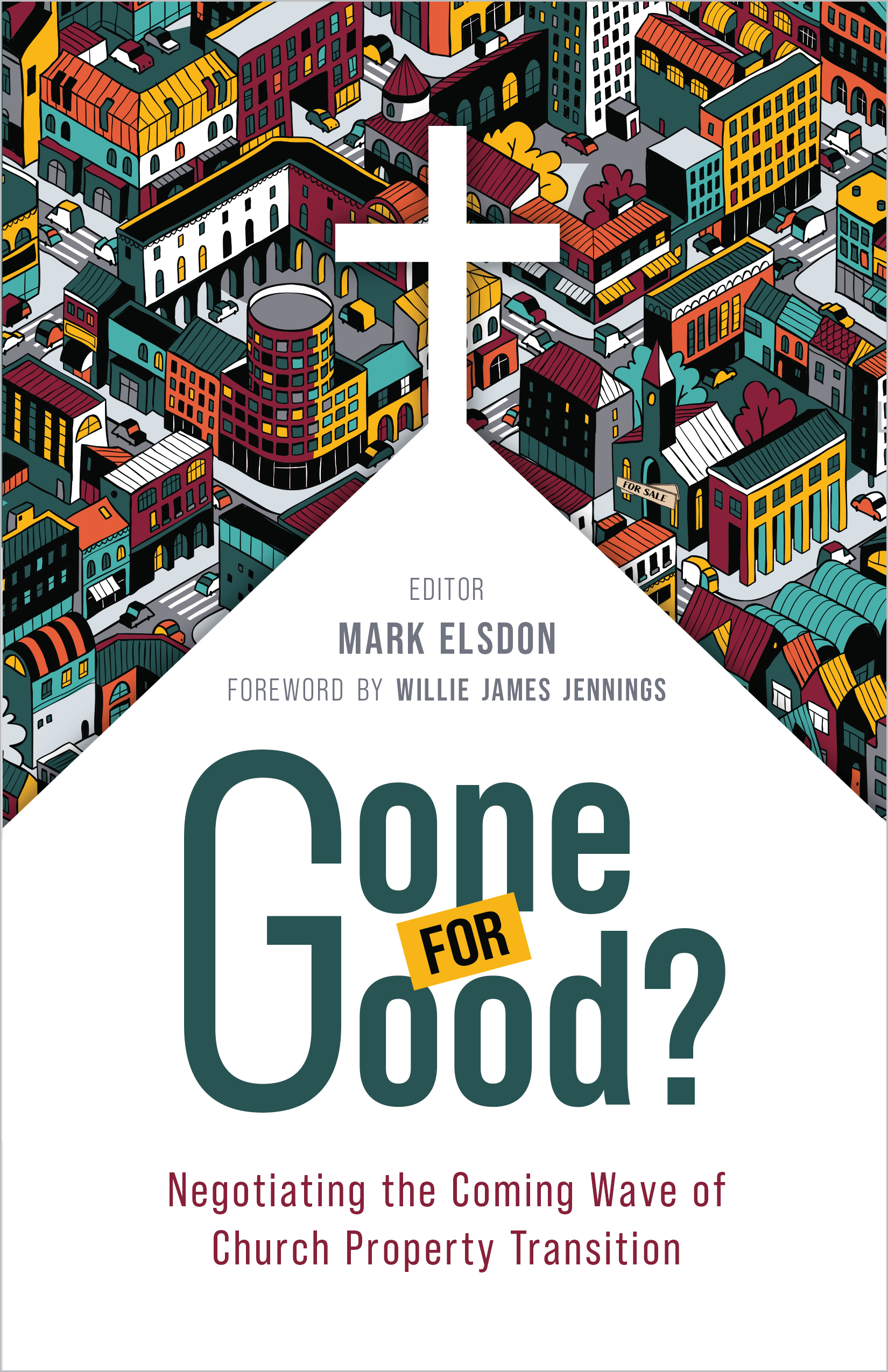by Thomas Edward Frank
Gone for Good: Negotiating the Coming Wave of Church Property Transition (Eerdmans 2024), edited by Mark Elsdon with a Foreword by Willie James Jennings
The seventeen authors who have contributed essays to Gone for Good call for nothing less than a transformative paradigm shift in the way Americans perceive church buildings. Collectively they challenge all constituencies that have a stake in what happens to these buildings – whether at rural crossroads, in small towns, or on urban neighborhood corners – to work together in advancing a continuing community purpose for them. And the paradigm shift begins with realizing that these constituencies include not only the congregations, clergy, and denominations whose names are on the church sign, but also neighborhood associations, non-profit agencies supporting cultural or social service activities, local governments, banks, realtors, developers, and chambers of commerce. The driving question implicit in the book is: what kind of community do we want to have, what kind of place do we want this to be, and what is the role of church buildings in advancing our vision?
The need for such a shift is undeniable. As several authors note, the vacating of churches or the steady diminishing of participation in them is making enormous changes in the built environment. The trend can be traced to the cultural and population upheavals of the 1960s. The vast majority of historic church buildings were erected by denominations with roots in Europe and thus in the European migration to North America. Eileen Lindner describes the church planting methods of those decades of expansion, as churches bought or were given lots in growing towns and cities. Church buildings constitute a kind of map of the mobility of particular ethnic groups – English, Swedes, Germans, Italians, and so on – as they moved around and eventually across the continent.
No one has found a way to count the number of such buildings or the number that are falling into severe disrepair or vacancy. But clearly the expansive years for the historic denominations were tailing off by the mid-twentieth century. Today tens of thousands of churches are at risk. It’s not unusual for small cities to have half a dozen houses of worship for sale right in the middle of town, or for a neighborhood to find a church building locked up for lack of maintenance when, as Rochelle Stackhouse, Senior Director of Programs at Partners for Sacred Places, points out in the second chapter, the area is in desperate need of space for community activities.
For congregations and denominations that are striving to keep their buildings viable, the paradigm shift must begin at a fundamental level. As Willie Jennings argues in his concise and brilliant foreword, churches are (literally) grounded in assumptions about land. They could grow because land was available, and the land was available because the people who were indigenous to it were largely driven out. Jim Bear Jacobs and Keith Starkenburg insist in their essays that churches have never faced this heritage squarely, and that they have a moral and spiritual responsibility to make recompense. More broadly, few congregations have truly considered their stewardship of the land they occupy, other than as a lot arbitrarily surveyed and carved out for the purpose of property ownership. But what does “owning land” entail for Christians? Coté Soerens argues that at the least it means seeking wellbeing and justice for the whole community and this patch of earth, not just “members.”
A key term that recurs in these essays is “place” – a holistic, interconnected sense of how all community institutions and constituencies, and the natural and built environment together, make a particular place what it is. A threatened or vacant church building can be a catalyst for drawing people out of their silos to consider their communities as a whole. The last five essays provoke new thinking about how everyone from city planners to zoning commissions to realtors to developers to philanthropies can have a critical role in transforming church buildings for community purposes. But only if they work together.
Gone for Good has its limitations, as editor Mark Elsdon points out. Voices from the growing Hispanic and Asian churches are lacking, as are perspectives from Judaism, Islam, and other faiths. The book limits itself to the United States with little explicit recognition that church vacancies are widespread in all Western societies. Examples of expansive reuse from the Netherlands or Germany or Sweden would make welcome additions. But one book cannot address every aspect of the challenges that face us.
Certainly one encouraging note is that the number of academics, community activists, historic preservationists, denominational leaders, and planners with an active interest in these issues is far greater than the seventeen authors represented here. A kind of national brain trust is coalescing today, after many years in which Partners for Sacred Places and just a handful of other organizations were ringing the bell for attention to the peril and promise of church buildings. Now many people are asking, are churches really gone for good? If they are, and if we act together, how can we transform this change into something positive? With their provocative challenges and inspiring case studies, these essays will most certainly advance the cause.

Mark Elsdon, editor of Gone for Good.
CORRECTION: An earlier version of this article incorrectly listed David Bowers as the only author representing the Black Church tradition in the book. However, the foreword was written by Dr. Willie Jennings, a prominent Black theologian, and the book also includes chapters by Pastor Joe Daniels and Dr. Patrick Duggan, both African American leaders, telling compelling stories of Black churches creatively dealing with property issues.

